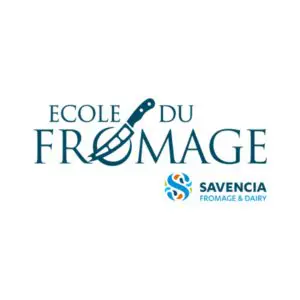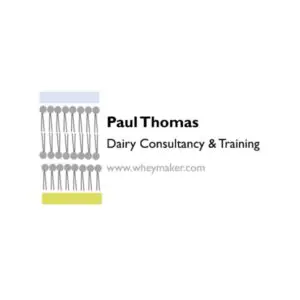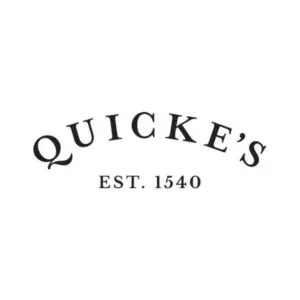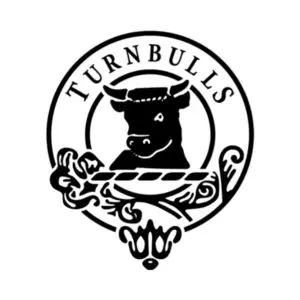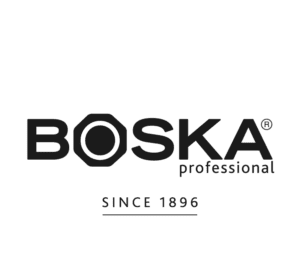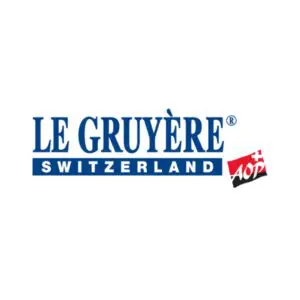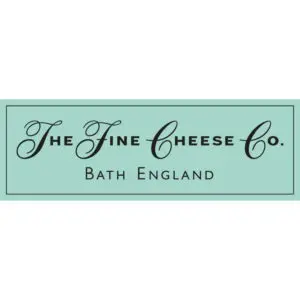#TNCN Spanish Cheeses with Rupert Linton of Brindisa. We have Cabrales, La Peral and Massimo, all form the top left hand corner of Spain.
Streamed live on Nov 24, 2020
GUIDE TO TASTING CHEESE
Learn about the four stages of tasting cheese and how to take tasting notes with this definitive guide to tasting cheese.
Spanish Cheeses Episode Video Transcript
Good evening everybody ,this is Charlie Turnbull this is Tuesday Night is Cheese Night we are talking astorias we are stalking a story and cheese sorry we just had the map in there so we were discussing the mountains that face over the bay of biscay and the winds coming across and it’s a bit of a stormy sea there isn’t it just off that curse.
Rupert yeah i mean it’s really you know it’s a really rough old place it’s a bit it’s a very popular destination for surfers actually you know recently it’s it’s uh it’s kind of like like it’s very similar to cornwall somewhere like that it’s kind of like an atlantic rough kind of coastal you know exposed kind of area yeah the atlantic coming in there right better introduce you all the people who know you will know you are the cheese maestro which you’ve told me today is the same as spanish as it is in its house she’s maestro for bin brindista um and uh you’ve been bringing brenda has been bringing in cheeses from all over spain for how long now well but just over 30 years now 30 years yeah so so just so well that’s about 1990 something like that yeah yeah that’s basically when we started to bring our first pallets of cheese came through in in 1990 yeah so what inspired you and monica to say you know what britain needs more spanish cheese well it was because it was partly because of living in spain i was brought up in spain and so that in 1990 i was in my early 20s and was trying to find something to do that that we we where we could you know share like our enthusiasm for spanish food and but you know work in england and commutes between the two countries really yeah no yeah it’s yes it’s it is england’s second home spain isn’t it not the area we’re talking about up asturias uh not bilbao not not san sebastian that north coast um much better known well let’s bring the map up now so people can see where where we’re traveling find the awesome jesus of spain so i’m going to zoom out a bit so everyone knows where we are right so that in case no one knows it’s called spain right with this lovely little section called portugal on the left and that’s the iberian peninsula and it sort of hangs off the bottom of europe like like a club foot but with the arrow we’re talking about at the top here is astorias yeah i think you’ve been there many times rupert yes i have i’ve been lucky enough in the last couple of years um i’ve been i’ve been a few times yeah yeah i mean it’s i love it i must say i’d love to be able to have time i go for work on the whole i’d love to be able to have time to go and you know have some lovely lunches in you know seaside you know fishing courts and things like that you know enjoy some seafood is it technically one of the basque country counties i’m going to show you no it’s next to the basque country it’s next to the bus county so so while we’ve got the map up where what what are we talking about here are we talking about sheep are we talking about cows where are they pastured what’s that what’s the history of sheep in this region so mostly no so mostly because of the grass because of the rainfall it’s it’s spain’s biggest area for for cows for cattle okay so that sets apart from the basque country which is known for its sheep’s milk cheeses and that’s just yes yeah yeah even though ironically the basque country is is just as wet i should think as asturias cows is where that where the historians have gone and in galicia and um so the the cheeses that we’ve got tonight are from they’re from dairies that are more or less about 25 to 30 kilometers in land on the coast and so they just as the mountains begin to kind of rise up and catch that weather coming in off the atlantic so by coincidence all three dairies are at about um 650 meters okay a little bit higher than the south of england but uh not quite as as high as so sort of near obedo that sort of area or yeah yeah yeah and then uh and then a bit to the left for um for cabralis so all the terry here let’s get on to cabralis the monster cheese that is cabrerase because um we’ve got a lot to say about that as as as it’s it’s a global icon in its own way yeah let’s let’s start with you telling us about where do you want to start i’ve got three cheeses here let’s get them up we’ve got one non-blue are we going to go there first yeah let’s do that one first yes yes so this is called the massimo massimo and it comes from a village in astorias called um called pravea and it’s a it’s a village where like historical records in that village go back to the to the seventh century and so it’s named after the king sila this this visigothic king and this recipe of uh of the massimo is based it’s a modern interpretation of a traditional asturian cheese recipe called and traditionally astorian farmhouse cheese is a a small i’m looking at this one i’m thinking this is maybe a kilo and a half yeah this is this is the two kilo cheese the two kilo cheese okay yeah yeah and also it’s a lactic cheese and so it’s one of spain’s biggest lactic cheeses it’s it’s a kind of an it’s a i mean it’s a this is a an adaptation of a traditional recipe so they’ve made let’s just explain lactic cheeses to the people you know this is a learning experience lactic means we are not using any rennet to make this cheese um often nowadays people will throw in a splash just for you know bit of texture um yeah historically so this is stark it would have been 100 acid so the structure of the curd is going to be very loose yeah yeah yeah and so so with this cheese when they they put the rennet into the into the vat and um when the curd is set they they have this a kind of special spoon which they scoop the curd out of the bat and put it into the into the molds and then they leave the curd in the molds for for 24 hours okay just let it drain the idea is for is it for it to drain as much as possible and then after that draining process um they take the cheeses out of the ash the molds and salt them and then that’s it’s the salting that helps this special rind to grow the the geotrichum rind if you look on where’s my camera going there you can see the kind of brain light might as well kind of correspond vertically yeah on there and um a lot of people you might be more familiar with this rind on a on a younger uh lactic cheese but this this particular cheese is is some six months old so it’s like it’s it’s really really as for electric cheese it’s really mature yeah you know i mean i mean i’ve i’ve seen six-month-old crotan de chavignol something like that which is again as a a trichome cheese but they’re like golf balls by that point you know you can honestly get a par 4 on them so this is retaining a lot of moisture i suppose it’s bigger yeah yeah no it is bigger it is bigger and and at this age i wouldn’t really recommend eating eating the rind i think it’s nice yeah i wasn’t planning to good good but we’re getting a significant breakdown going in next so a geotrich rind has a penetration as a as a yeast or a mold of maybe you know with a typical loyal goat’s cheese maybe a couple of millimeters but here it’s going in its full centimeter almost as much as a as a camemberty a mold might do so is that a sign of its age i’m taking it it’s just had a long time to get breakfast and going yeah very much so yes yeah yeah yeah and it’s because it’s a it’s a kind of a cheese made in a farming area people will be used to eating people there would be used to eating that cheese at all the different stages of it yes maturity well that’s that’s that’s one of the the myths about all cheeses is that there’s one right time where in the old days cheese did not travel it really didn’t you got the local cheeses so the one or two local recipes of which there would be many variations particularly in age yeah yeah yeah so so yes so this cheese is made at uh um it’s about 650 meters altitude and it’s made in in the village of plavia but travia has a river running through it the river nalon and so it’s an area of like moisture of rich pastures and uh the cows that they use are a swedish friesian cow and it’s a bit it’s a it’s a i just it’s new to me it was really quite new to me as well actually i was looking up on on on the internet and it is a thing there are sub subspecies of of freezing in sweden that has more fat more protein in the milk and that’s what and that’s what the dairy are looking for when they’re making this cheese yeah because those scandinavian breeds i didn’t know there was a scandinavian frisian but and that’s going to even tend to be at the hardier stock so they are higher solid levels yeah yeah and these these this this cattle also most of the year they’ll be spending outside in the daytime on open this time of year when days are shorter they don’t tend to go out quite so much but but mostly they’re they’re out in the open right i’m fascinated by this so i’m just going to bring up to the um the camera i don’t know if people this is an interesting because this is a lactic set you can see the way that the curd breaks that it’s got that kind of um soft yet um it’s got very little structure but it’s not pressed just say so this is just gently um gravitationally compressed curve just forming under its own weight yeah yeah and then i find when you crack open the curd just the smell that comes out of that of that really kind of milky aroma it’s just there’s just something very considering it’s a cheese which is six months old i think it’s incredibly fresh and and i would agree i would agree and i would also add that it’s surprising because the rind doesn’t smell that way no no no the grind is ten different types of of an animal has passed this way on its way past you know it’s kind of on a mission yeah it’s on a mission it’s got it’s got you’re in a bit of ammonia and a bit of uh uh um you know farm farming farm on a wet day yes yeah yeah yeah yeah inside not at all yeah yeah yeah yeah so what about the um so we’ve got the the center which has this dense creaminess it’s like congealed cream um but you’ve got this uh coat which has this completely different texture and i’m not insulting it but it’s almost got the texture of a cheese slice and almost the color of it as well it’s kind of shiny isn’t it yeah it’s got shiny and it’s slightly slightly elastic which the main body of the cheese doesn’t have it’s got a lot more flavor than your average cheese slice set for certain and that is getting hints of farmyard i think yeah much more much more umami hmm slightly more about yes much more savory almost like a cooked cheese flavor yeah yeah um in fact it’s almost heading towards a sort of cameron kind of a bakery yeah yeah i mean it’s kind of like oh i mean the cheese is in two very different stages isn’t it on the center and on on the on the outside i’m gonna i’m gonna try the combo now hmm it’s really good that’s almost like the outside is like an accent it just gives a slightly basic note um to the lighter flavors that are in the center yeah and do you find it’s quite strange like quite a dry cheese it kind of yeah kind of puffers the mouth a bit as well and that’s one of the one of the uh the the characteristics of these asturian cheeses is the it’s the way it’s the the draining of the whey and that creates this particular recipe in this particular style which is what they look for because these lactic cheeses tend to be at the drying the um you know desiccating end of the spectrum for cheeses now it’s delicious so is it a is it a is it a protected food name or is it just a local speciality well this particular cheese is it’s a it’s a new concept basically using an old recipe okay the old recipe would make a cheese of about kind of 400 grams and it would be a small kind of cone-shaped cheese and so this one is a two kilo one the idea i think is it it helps it to last better on the counter yes it’s an easier cheese to to to sell and and and to work with and then some of this numbers yeah all right we we we we’re 10 minutes in and we’re only one cheese in we’re going to get a move on okay i have to say i think that is delicious i think that’s really delicious um it’s quite it’s really quite unusual for a spanish cheese it’s really unusual i don’t know any other cheese like it in spain it would come across as sort of french if you know what i mean you know yeah um right we’re not doing the cabrales yet so who have we got next so the next cheese that we’ve got uh today is called la peral here this blue cheese here yeah and this is from masturias and it’s it’s about from a village about um 25 kilometers away from uh from pravia from from brazil and also at the same altitude and the difference with this cheese really is that well apart from it being blue it’s also it’s a pasteurized cheese it’s made with rennet it’s not lactic and and uh um and it’s salted on the rind so if you look on the right in this light you can see on my on my piece there’s a kind of like kind of orange blue there which uh is a kind of a has a slight marmity kind of aroma to it something the first thing comes to mind is that is that cake that you give to cattle do you do do you know what i mean well that’s salty like the big kind of red thing that they lick well i was thinking the brown one but yeah yeah yeah yeah yeah yeah um and um but i get your marmite but it’s um so it’s almost beginning to get a washed rhine thing is that what you’re saying yeah yeah is it a pressed cheese it feels firmer so this kind of cheese could be you know of a blood of texture but it’s not it’s got much more rigidity i’m sort of squeezing that quite hard and it’s not doing anything kind of thing yeah yeah yeah yeah yeah and also um i mean it’s a style of cheese which is which is made in a in a much more um uh you know you know traditional way in in in terms of modern cheese making there’s no kind of caves there’s no kind of like unusual materials used and um and it’s a penicillium rock 14. yeah it is yeah yeah so it’s got quite intense blueing towards the center it’s really getting in there and getting the blue it’s really colonizing that center so it’s sort of got a combination of you’re getting the little what i think of the cavelets that you get of the blood of urns and the rock fours but you can clearly see the needling is vertical there um yeah and you’re you’re getting you know the the the the encouragement of the mould through those those blue needles those nettings there yeah yeah and um because also i think because it’s a a pasteurized cheese it’s something it is it’s an easier you know easier sounds pejorative but it’s not quite as complicated as someone’s like as the cabrales we find that’s a really good alternative if you don’t want to kind of dive deep and enjoy the cabrales then then lapidar’s are really good i strongly endorse that um uh when i had my shop we used to think of a blue cheese ladder you know and at one end you know we didn’t stock it but you think of the camper zones of this world if you know what i mean and then we used to come up through cheeses are very much very much promote like montenola gorgonzola dolce accessible and at the other end as we’re about to discover we have the cabrales of this world which are and this one is halfway isn’t it it’s accessible got the cream um i’m getting quite a lot of salt the blue is very fresh in my mouth it’s very yeah you know yeah they tend to be quite young cheeses i mean this this one’s probably about i think roughly about three months old just probably just under three months old but for a blue for a three month old cheese this the blue is you know right through the cheese there’s no yeah yeah yeah yeah yeah yeah just no you know what it’s about it’s quite especially in the middle bit it’s really quite moist as well isn’t it kind of granite i think a cold sweet white wine is where i’d like to go with this you know some maybe i mean i don’t know maybe i don’t know it’s a big area over in the best country for apples is it an is a store isn’t apple country ciders and very much so yeah yeah mad about cider okay so it’s definitely and they they like it kind of dry like they’re like a dry flat cider yeah they have kind of they’re true look like a wine kind of thing yeah like totally kind of mouth puckering kind of uh yes it’s very much safe you also get i mean i was chatting to a fantastic guy um alastair morale who specializes in global ciders fantastic stuff and he um and cider has apples have the same range effectively that grapes do so you can go all the way to those flats those deeps those rich those viscous the sweets um they all it’s all possible in apple land and i like this i bet you that they have some sort of aged high alcohol high viscosity apple that sweet would go awesome there’s a lot of varieties there’s a lot of historian apple varieties that are you know the equivalent of a rare breed in in the cheese world definitely yeah yeah okay are we ready let’s let’s do the fibralis because it is it’s just an epic i mean it is an epic cheese and the way that it’s made it’s just i mean it’s absolutely extraordinary right start from the beginning where’s it made from it’s a pdo isn’t it we’re talking about this is a high level yeah yeah yeah so so it’s a cheese that has to come from from the area in there’s a village known as cabralis in the mountains called and um and in that area there are around 20 dairies that are still making making that cheese and the the requirements for making cabrales a really quite flexible so it can be made with sheep’s milk with goat’s milk with cow’s milk or with a you know blend of all over what people traditionally used to do was they’d send all their animals out you know onto the mountains bring them back home at the end of the day milk all three species then stick it all in a bat and then so you never knew you know how much sheep how much goat or how much cow would be in the recipe wow and that was obviously you know some time ago basically yeah and uh people can be a bit more organized now yeah people want to try and make the same cheese twice these days and um especially especially if you want to kind of you know export it around the world you know your customers expect to be able to buy it again and with the same something very similar again and um so our cheese comes from a from an app who we we’ve been buying from for probably about 15 years now and he after what is what used to happen in cabralis was it was it was a cooperative and so you you could only buy cabralis from the cooperative and so all all the makers would would sell their cheese to the cooperative they’d all get mixed up and then when you went along to buy your cheese you never knew who which maker you were going to get so not only did one maker could have made it with any milk but then you don’t even know which make you’re getting kind of thing originally yeah but now that because that was just obviously it was very difficult and uh so now people who who make cabrales are allowed to sell it under their own names under their own uh the names of their own dairies so you can guarantee you know if you find a particular cabanas that you like you can you can find it again uh without you know struggling and so this chap pepe who we who we buy our cabarets from that’s what he was he’s been trying to do over the last um well the fifth at least the 15 years that we’ve been buying from him is to create a consistent cheese which he he he matures himself and then he he sells in spain and in and in the rest of the world so you talked earlier about um la paralle not needing to be done in caves that isn’t the case for cobras it needs to be matured in in the caves around yeah yeah i mean part of the thing it the the the corrales is like you know you you add the the rennet you add a tiny bit of rocker 40 to it you make the curd you wait for the curd to form then you drain off the off the way and then you knead the curd again before putting it into the molds right you need to hurt yeah which is like like after after the way he’s gone out then it’s just kind of like like you know my bread wow and so i mean it’s just it’s a really unusual way of making cheese so then the cheese cheese goes you know that process of draining the curd one before you put it in the mold are you you allow the curd to be spread out over a table for lack of a better word that’s quite a british style um you know not quite chattering but it’s it’s that take the code on the table and then cheddaring you stack it and you process it by flipping it and all sorts of things so it’s a little more gentle but the similar state stage yeah yeah very interesting and where are you salting it you salting the curd before you put it into the no it goes into the molds and it stays in the molds for two or three days and then and then you you salt one side turn it over and you take it out of the mold and then you salt the other side when it comes out and they’re put into um uh their first chamber in the in the dairy for 20 days and in that 20 days and again they begin to lose more more moisture yeah and uh which is they’re 20 days about five days longer than most other dairies that carburetors use so he’s going for a dry cheese but then what’s bonkers well i think it’s completely bonkers is they they take the cheeses up into the cave and uh the caves their caves belong to the government like you you rent space from the government to the head they’re like official cheese places and the caves they have to have certain requirements and one of them because they’re all limestone caves naturally formed limestone caves yeah one of the requirements is that they have to have a stream running through them okay and and uh i have i heard just found out that there isn’t you can make an exception to this rule if you the humidity in your cave is over ninety percent okay okay okay i love that i don’t want to be rude about environmental health officers some of my best friends are environmental health officers but i can see the exact opposite rule counting in the uk even if you want if you want to stream as a reason not to use the cave or that kind of yeah the next bit is even more bonkers i think because it’s the most extraordinary cheese making method is so what they do is what pepe does is he he collects the water that drips off the stalactites right and then with that water they wash the rinds of the cheese with the water off the stalactites because then what they want to do is to they want to prevent any mold growth occurring on the surface of the cheese so if you look at your piece of cabrales yeah there’s there’s none nothing there so that’s so i mean that really is nothing there so but he’s not encouraging the growth of bacteria here so when it’s not a washed rind in the sense of uh wanting to lay the groundwork for a different kind of ripening culture we’re just repressing moulds yeah yeah yeah yeah because because also because that helps also it helps to control the strength of the cheese if you can believe this increase it or no no no no decreases yeah yeah yeah let me just cut some normally in my sort of studio spare room here i have um i have some some what we call in our house ebr some kitchen rolls and uh but um yes you need it for this yeah yeah yeah yeah yeah yeah yeah but you can see on the on the blueing in this that that the the caprese is not pierced it’s the thing that the thing about the thing about um the these mountains and because they offer is that the rocket 40 bacteria occurs naturally there so although he pops a bit in into the into the milk the it’s the it’s the wind it’s in the air and the from the outside it’s just just densely densely molded and that is typical of a cambrella so it’s going all the way to the edge and i want to just draw attention to the to the texture here um i don’t know if we can focus come on my friend the camera you can do this uh well it will do in a second magically there we go it’s got a very fluffy um crumbly uh soft texture almost like slightly dried out cheese um cream cheese kind of thing um it it really is it crumbles really easily there you go yeah it’s quite difficult well difficult a little bit tricky to cut sometimes you know you get a little bit little bits flaking off it but it also um at age in my experience becomes smeary it becomes very creamy it really gets into them my first encounter with this cheese was that the world cheese was i think we’re in birmingham and i didn’t know it at all i already did i was i was i was naive and um it’s got right under my tongue and it’s like oh you’ve got saliva in there to kind of loosen it it it’s brilliant so so i couldn’t believe this and i was offering around to some of my cheese loving friends and it was brutal because at the wrong age it has it’s almost like you’re chewing aluminium foil it’s got a real metallic element and i couldn’t believe they didn’t want to enter this cheese so i popped into my bag which i probably wasn’t supposed to do i took it home to my cheese shop and i had on the counter to show customers you know try this and then one of the customers goes what do you mean this is delicious so i don’t know you know a customer slightly patronizing and it had transformed and all those aggressive flavors had parted like clouds on a sunny day and suddenly all that complexity made sense and was balanced and and it’s just such a big cheese it’s just but it’s window of perfection it’s quite difficult to handle yeah yeah yeah yeah yeah i mean this particular one is is six months old so and the some of the other the cheeses in the caves at high altitude they’ll age for a year but i find that the older they are the the more kind of cleaner they get in a funny way and the the the notes that get emphasized it’s like mango tropical fruit like really delicious you know delicious things obviously you can’t use anything else or taste everything else for the rest of the day but it’s worth it you know there are days that you have to dedicate this this is a bottle of wine cheese you need to drink with wine with it to be able to walk away it’s kind of oh yeah kind of sweet a sweet wine is pretty good with this as well like a sweet like a px or something like that because yeah sherry would be pretty tasty but it’s it it’s this is the spinal chap it’s final tap cheese basically it’s turned up to 11. you know this is the uh yeah you know it’s it it just goes you think you’ve heard noise in cheeseland you haven’t had cabrales yet this is the big boy this is the one that makes people stop in their tracks but what’s amazing about astorias which i love so much about it is cabralis is an everyday cheese one of my colleagues at work you know they they had it in their in their packed lunch when they went to school i mean it’s just like it’s just totally a totally normal everyday cheese for for people in that part of the world i can imagine people i imagine people coming from mysterious tasting other people’s cheeses going so here yeah i’ve got alice in here saying what about port well it’s not it’s not close it’s not far away um what about yeah yeah it’s not that far away and i think something with a little bit of sweetness in it for me for my for my palate i i enjoy a little bit of sweetness to balance off that that cabralis definitely yeah yeah i for me for me i would go with um uh probably one of the more brandy-ish ports rather than the sort of viscous ribena pools you know what i mean to lift yeah to match up yeah amazing so we’re coming to the end now are there any other cheeses from the asturian region which you would want people if you were there and you were doing a cheese tour you’d want people to pick up on well there’s a there’s another cheese called called um casine which is um again it’s going through a little bit of a revival in in nasturtius and uh again it’s one of these cheeses which it’s got a similar texture to cabrales it’s very mouth buttering you know really intense and uh and and also probably mostly only available in in our studios did you say it was called cassine cassine there’s c-a-s-i-n well that’s got to be related to caseins and you know doesn’t it oh it could well be yes i’m i’m assuming that the queso de valde on the peacos europa must come from this region as well yeah i mean the cabralis and valdeon are less than 50 kilometers apart but cabralis is on the north facing side of the mountains okay like facing into the into the bay of biscay and valdeon is facing down into the plane and so it gets all the sun so it’s much drier on that side the thing about those goats cheeses is that they can go gray naturally by becoming blue and you get that kind of which gives it an ugly look which it doesn’t deserve because it’s actually you know quite a creamy complex delicious seasoning yeah and i’m thinking it’s is it chestnut leaves on that sort of vine leaves on the outside yes um sycamore sycamore cheese yeah and originally the cabrales used to be wrapped in in sycamore leaves and at some point i think probably in the 80s they rationalized it and and replaced the leaves with foil i love the idea of rationalizing cabrales yes we’ll slightly tame this monster take the leaves away because we’ll wash it in stalactite water that’s the thing we should be doing yeah it’s been fantastic rupert i can’t thank you enough um no thank you brilliant talking to you the the cheeses that you’ve brought along have been amazing um and uh and i encourage everyone to get online and get some brandison uh cheeses for for christmas um thank you very much everybody support everyone let’s all spend all our money let’s go into 2021 broke that’s the answer all right thank you very much okay thank you charlie bye right uh what should i say well uh i say what i always say which is come and learn about cheese with the academy of cheese come and find about everything we do if you don’t know already there’s lots of learning out there i believe that cabralis is a level two cheese and we’re just doing level two online at the moment i’ve got a lovely group we are making cheese tomorrow very exciting i’ve got a little cheese making kit that’s what you can do if you come and study with the academic cheese but apart from that next week we have nearly richard who is toured of homage de france we’re doing burgundy very exciting i’m assuming we’re going to get impressed in that which i’m really excited about one of my all-time favorite washed around cheeses lots of other people as well so hopefully see you next week eight o’clock tuesday night is cheese night be there or





